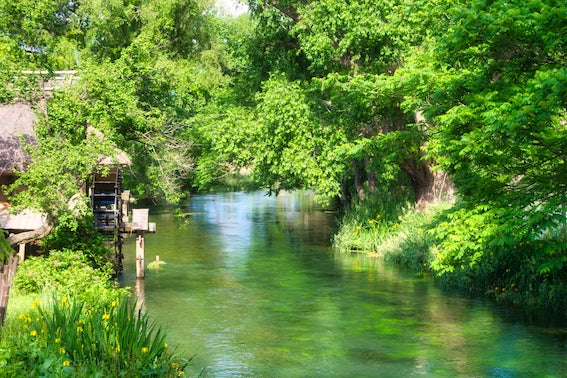The Curious Case of Wasabi: Internationally Known Condiment Very Few Have Actually Tried

Everyone knows what wasabi is. Or at least, most of us think we know about the Japanese answer to horseradish.
Thanks to the never-ending popularity of sushi and sashimi, wasabi can be found in a tube on most supermarkets’ shelves, is eaten as snack in the form of peas and has even flavoured Kit Kats…
However, you will be surprised to know: what you have been eating is most definitely not wasabi. The “wasabi” we have all eaten with our takeaway sushi is in fact mustard, horseradish and food colouring. Only about 5% of what we’ve all had a chance to taste in Japanese restaurants around the world comes from the wasabi plant, says BBC.
Why such a subterfuge? Real wasabi, which comes in 100 different varieties, is extremely difficult to grow and as a result, it doesn’t come cheap. In fact, it is one of the most expensive crops on the planet! In 2014, BBC reports prices such as $160 (£98) per kilogram at wholesale and up to $308 per kg at retail.
Naturally occurring in the mountainous regions of Japan, it has been a popular produce for centuries but we have to wait for the 17th century for a farmer to successfully grow the root. Needless to say, the growing international demand cannot be matched by the Japanese production. Not even close.

Known as the wasabi region, Shizuoka produces 80% of the Japanese wasabi roots. On the Shizuoka Tourism website, you can learn about the hard work that goes into producing the plant and the extremely exacting requirements for a successful crop.
Things you need to get real wasabi include constant temperature, a certain altitude “well over 1,000 metres in some cases,” pure, soft water and irrigation requirements that most large farms would be hard pressed to reproduce. “Individual field sections […] do not communicate with each other. Water comes through pipes directly connected to mountain streams […]. It is then diverted to side funnels, which prevent any water to go back into another field!”
Taking two years to mature, you can eat the entire plant. You may know that the large root is grated – traditionally on a sharkskin grater – and served as a condiment accompanying sushi and sashimi, but the stems can also be pickled and the leaves eaten raw or cooked.
The Cordon Bleu website reminds us that “wasabi belongs to the same plant family as broccoli, cauliflower, and cabbage” and that it has long been used to prevent spoilage. Other cousins include mustard and horseradish. However, it is hard to find the pungent taste of wasabi in any other ingredients and let’s not forget that real grated wasabi’s sharp taste only lasts for about 15 minutes, so it should be grated as needed. All this explains why the world is increasingly trying to farm this difficult and extremely lucrative crop.

"It is much like gold - we expect to pay a lot for gold. Well, we expect to pay a lot for wasabi," Mr Oates, who spent 30 years to set up the first commercial North American wasabi farm, told the BBC.
Of course, true luxury comes from rarity and efforts made across the world to farm wasabi might finally help us all to get a “real” taste of this well-known condiment. Or so we’d think, but prices are reported to increase year on year. Wasabi really is a weird one…
Let’s not despair though. The curious case of wasabi and its popularity in “knock off” form shouldn’t stop you from enjoying your sushi. However, if you ever get a chance to taste the real thing, you might never want to go back.
About the author:
Sarah Kante is a culture and entertainment writer with over a decade of experience. Her passion for travel has led her to explore the world extensively, from Europe to the Pacific, Asia to the USA. When she isn’t on the road, checking out cultural events or writing, you can find her in the kitchen, trying to master recipes from all over the world. When she has the time, she also writes a travel blog, Sarah Does Travel Writing.





3 comments
Thank you for directing me to this article. I would have never known any of this. I will not fear the ingredient name wasabi when trying authentic Japanese foods. This is really fascinating. Thank you for this article.
Thanks for the question Anna! Real wasabi tends to have a slightly sweet, more earthy flavor compared to mass market “wasabi” and has less of the nasal clearing heat. Definitely worth a try if you happen to come across it!
Is it possible to explain the difference in flavor or wasabi and mass market “wasabi”?